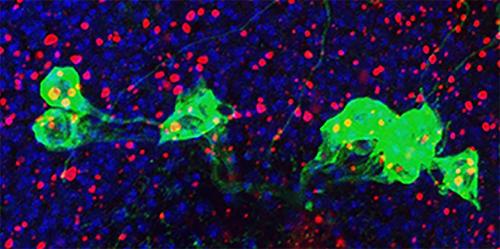NIH study implicates hyperactive immune system in aging brain disorders
Results suggest a breakdown in brain cell waste system triggers a destructive immune reaction.
In a study of fruit flies, NIH scientists suggested that the body’s immune system may play a critical role in the damage caused by aging brain disorders. The results are based on experiments in which the researchers altered the activity of Cdk5, a gene that preclinical studies have suggested is important for early brain development and may be involved in neurodegenerative diseases, such as ALS, Alzheimer’s and Parkinson’s disease. Previously, they found that altering Cdk5 sped up the genetic aging process, causing the flies to die earlier than normal and have problems with walking or flying late in life and greater signs of neurodegenerative brain damage.

In a study of flies, NIH scientists showed how the immune system may be a culprit in the damage caused by aging brain disorders.
In this study, published in Cell Reports, they suggested that altering Cdk5 resulted in the death of dopamine releasing neurons, especially in the brains of older flies. Typically, Parkinson’s disease damages the same types of cells in humans. Further experiments in flies suggested the neuron loss happened because altering Cdk5 slowed autophagy, or a cell’s waste disposal system that rids the body of damaged cells in a contained, controlled fashion, which in turn triggered the immune system to attack the animal’s own neurons. This immune system attack is a much “messier” and more diffuse process than autophagy. Genetically restoring the waste system or blocking the immune system’s responses prevented the reduction in dopamine neurons caused by altering Cdk5. The authors concluded that this chain reaction in which a breakdown in autophagy triggers a widely destructive immune reaction may occur in human brain during several neurodegenerative disorders and that researchers may want to look to these systems for new treatment targets and strategies.
Source: U.S. National Institutes of Health
- 330 reads
Human Rights
Fostering a More Humane World: The 28th Eurasian Economic Summi

Conscience, Hope, and Action: Keys to Global Peace and Sustainability

Ringing FOWPAL’s Peace Bell for the World:Nobel Peace Prize Laureates’ Visions and Actions

Protecting the World’s Cultural Diversity for a Sustainable Future

Puppet Show I International Friendship Day 2020

